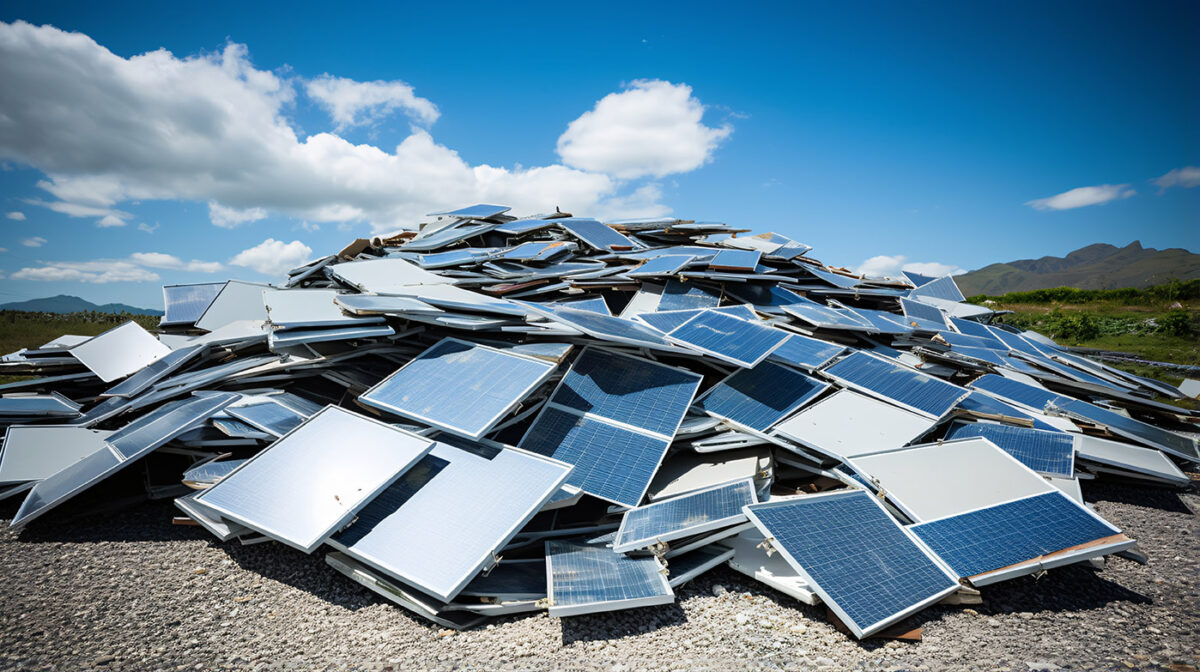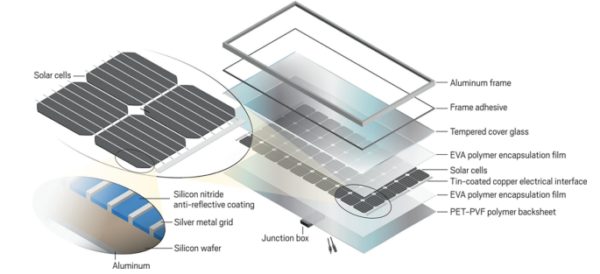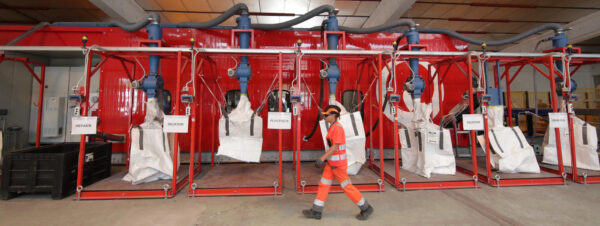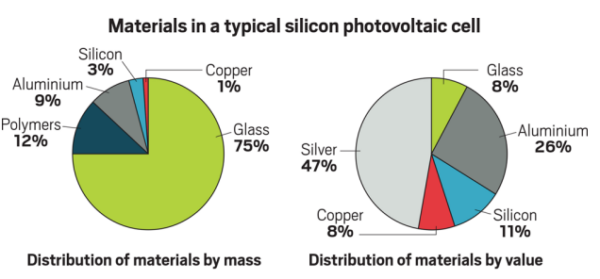Strategies for Managing Solar Panel Waste

The difficulty in handling solar panel waste lies in managing the large amount of waste, retrieving valuable materials, and controlling toxic substances.
As the push towards renewable energy sources accelerates, solar panels have become pivotal in harnessing solar energy. However, the rise in photovoltaic (PV) technology adoption has highlighted a critical challenge: recycling end-of-life solar panels.
Over 90% of photovoltaic (PV) panels are manufactured using crystalline silicon and are typically expected to last around 30 years. It is predicted that by 2030, about 8 million metric tons of these panels will have reached the end of their useful lives, and the numbers are expected to increase to 80 million metric tons by 2050. However, the recycling methods employed for these panels are currently underdeveloped and inefficient.
The Complexity of Solar Panels
Solar panels mainly consist of photovoltaic cells that convert sunlight into electricity, utilizing materials like crystalline silicon and thin-film technologies such as cadmium telluride and copper indium gallium selenide. In addition to the PV cells, solar panels include components like glass, aluminum frames, and encapsulants like ethylene-vinyl acetate, which require advanced recycling methods to recover valuable materials such as silicon, silver, and aluminum.

Solar photovoltaic modules are a complex sandwich of metals, semiconductors, polymers, and glass Courtesy of ACS Publications.
Manufacturers construct solar panels by linking multiple cells together with copper wires, which they then solder using tin and lead. They assemble these cells into modules and seal them within layers of a glue-like substance known as poly (ethylene-co-vinyl acetate) (EVA).
Subsequently, manufacturers cover each module with a protective back sheet made of polyethylene terephthalate (PET) and poly (vinyl fluoride) (PVF), top it with a layer of glass, and encase it in an aluminum frame. They piece these modules together to form full-sized panels. Although this robust, weather-resistant design ensures longevity, it also complicates the disassembly process
Current Recycling Practices and Their Limitations
At present, most recycling processes for solar panels involve removing the aluminum frame and the glass cover, which together make up over 80% of a panel’s mass. The remainder, which includes valuable materials like silicon and silver, often goes unrecycled. This portion contains critical raw materials which account for two-thirds of the monetary value of the materials in a panel. Unfortunately, today’s recycling technologies fall short, often leading to the incineration of these valuable components, which not only wastes resources but also fails to mitigate environmental risks.
In 2018, the French company Veolia launched the first recycling facility in Europe dedicated to end-of-life photovoltaic panels, located in Rousset, France. This innovative plant processes 1,800 tonnes of material annually, with plans to increase capacity to 4,000 tonnes.The facility boasts a 95% recovery rate, recycling materials such as glass, aluminum, plastics, and silicon, which are then repurposed across various industrial sectors.

First Recycling facility in Europe. Courtesy of Veolia.
Technological Barriers to Effective Recycling
The main technological hurdle in recycling solar panels lies in the efficient separation of the valuable components which represent two thirds of the monetary value of a cell’s materials. Current methods, which include mechanical shredding, can degrade the quality of recovered materials.

Bulk materials like glass and aluminum make up more than 80% of the mass of a silicon photovoltaic cell (left). But two thirds of the monetary value of a cell’s materials is from silver, silicon, and copper more minor components (right). Courtesy of Martin Bellman/Icarus.
Researchers have investigated new methods like thermal processing and chemical treatments to dissolve adhesives and separate materials more finely. However, these processes are expensive, require significant energy input, and can generate hazardous by-products, posing additional environmental and economic challenges.
The Need for Innovation in Solar Recycling
For solar panel recycling to become more sustainable and economically viable, innovations are crucial. The industry needs technologies that can not only recover high-value materials efficiently but also operate in an environmentally friendly way. Solar panel recycling companies are developing the technology and infrastructure to process the upcoming volume of end-of-life solar panels.
In the last year, recycling companies have also commercialized and scaled the recycling and recovery processes. For example, SOLARCYCLE collaborates with solar providers like Sunrun to recover up to about 95% of a solar panel’s value. They can then return this recovered value to the supply chain to manufacture new panels or other materials. By embracing innovation, humankind can ensure that solar energy remains a sustainable and responsible choice for the planet.
